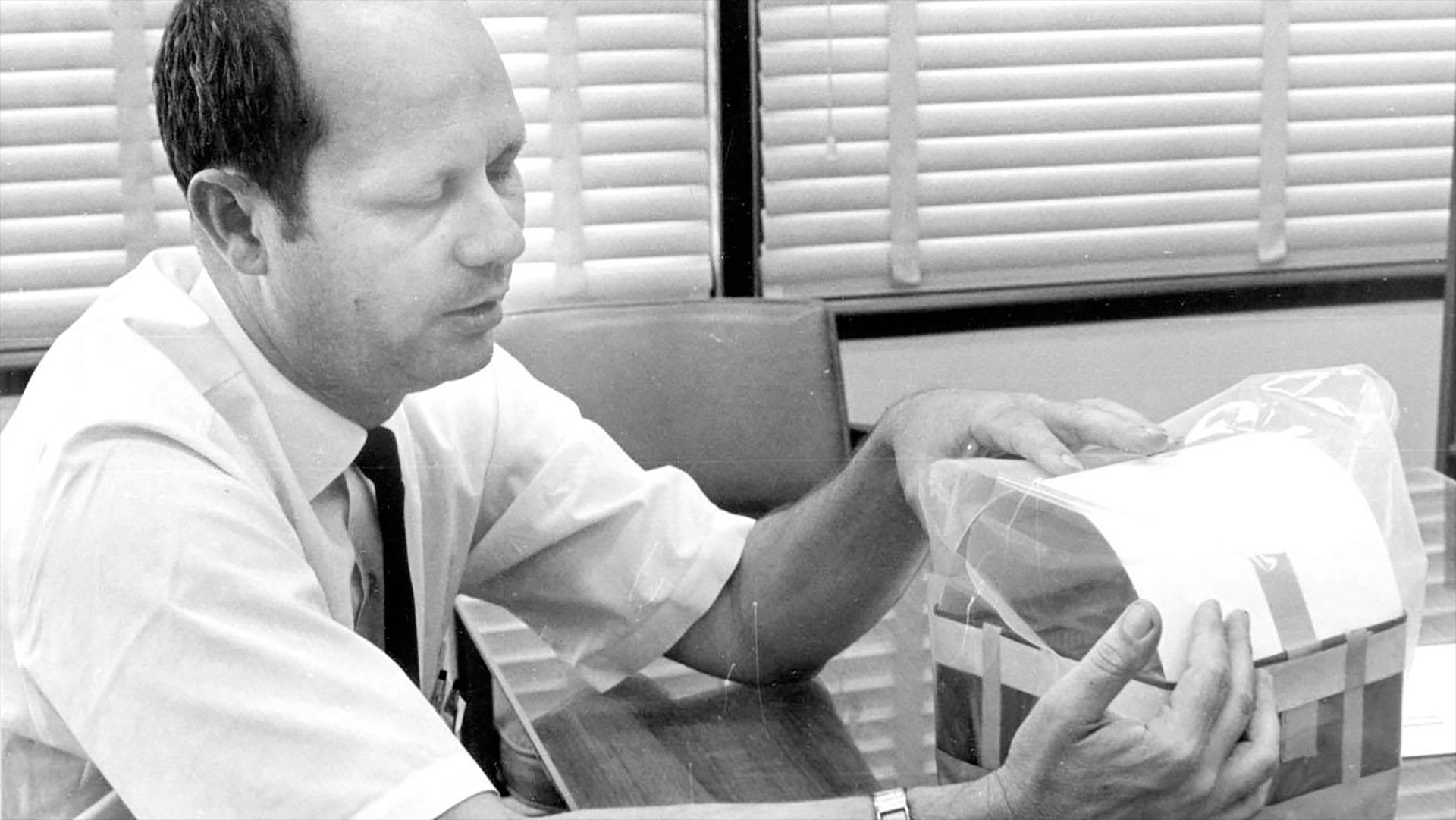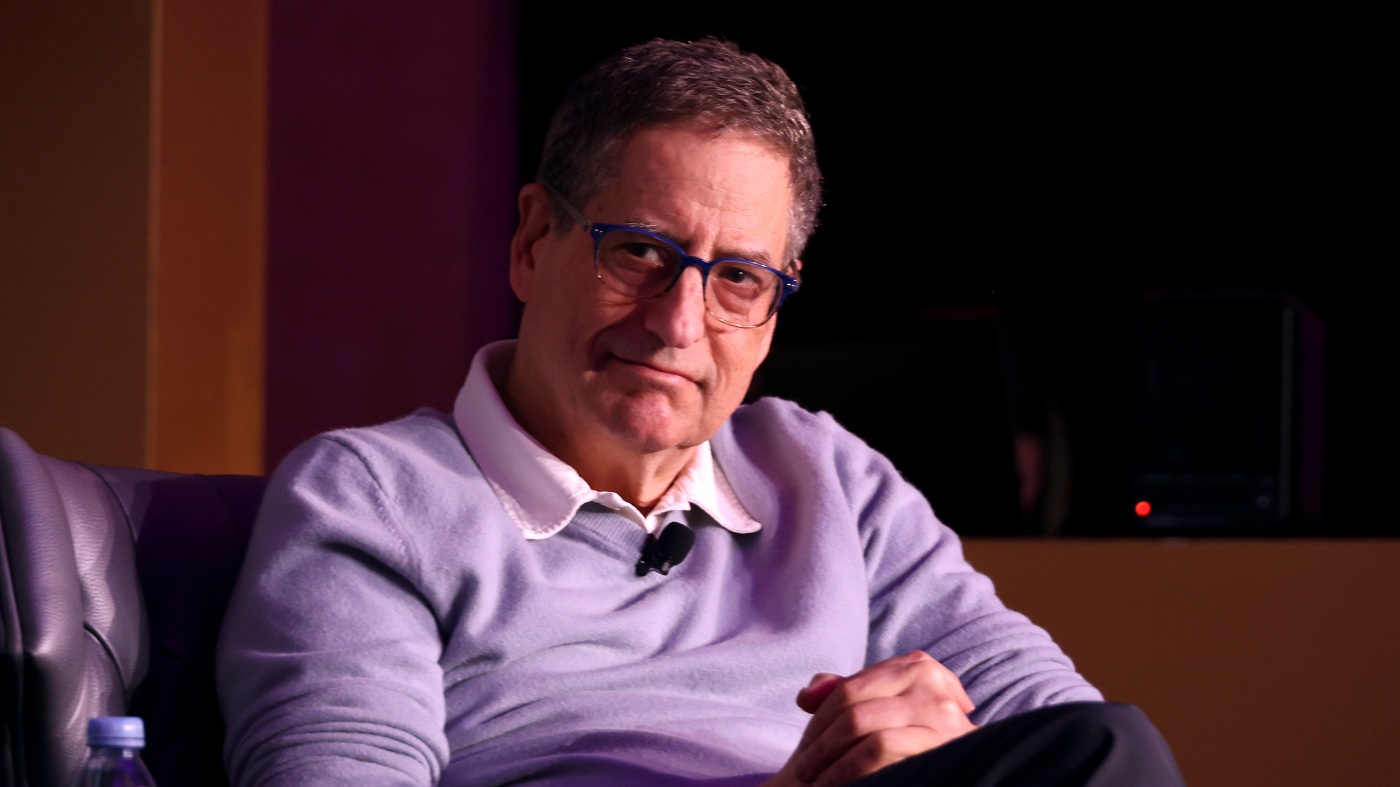The Problem of Finding a Marriageable Man
College graduates are marrying at high rates. Everyone else isn’t.

Subscribe here: Apple Podcasts | Spotify | YouTube | Overcast | Pocket Casts
Marriage isn’t dying, but it is stratifying.
Dating and marriage markets have transformed as more women have gone to college and the share of college graduates has skewed more female. Some observers have concluded that this imbalance has left highly educated women unable to find men to marry.
Not so. In a new paper cleverly titled “Bachelors without Bachelor’s,” the economists Clara Chambers, Benjamin Goldman, and Joseph Winkelmann find that “the share of marriages where the wife has a four-year degree but the husband does not has quadrupled.” Contrary to popular narratives, marriage rates for educated women have remained remarkably stable.
So who isn’t getting married? Well, a growing share of non-college-educated women. On today’s episode of Good on Paper, Goldman, an assistant professor of economics and public policy at Cornell University, joins me to discuss what his findings reveal about the state of American marriage.
One clue as to why marriage rates for non-college-educated women declined so steeply over the 20th century is revealed when you look at a map of marriage rates. In areas where men have the lowest rate of bad outcomes such as incarceration or unemployment, the marriage gap between college-educated and non-college-educated women is 50 percent smaller.
But what—if anything—is to be done? Although some commentators urge people to “just get married,” Goldman remains skeptical (as do I): Say we had some technology to put the marriage rate from 60 percent to 70 percent. “Would that be ‘good’? Goldman wondered. “People still say they really want to be married and it’s an important thing they want to achieve in life. But when they’re not doing it, I think there’s serious questions we have to ask about why, and are folks able to find the right match?”
The following is a transcript of the episode:
Jerusalem Demsas: Women are so picky. We’re gold diggers who want to marry up and would never deign to marry someone less educated than us.
If you’re on the internet or just a human being alive today, you’ve heard something along the lines of this narrative: College-educated women refuse to date “down,” and it’s creating a crisis of marriagelessness.
There’s just one problem with this narrative: It’s not true.
My name’s Jerusalem Demsas. I’m a staff writer at The Atlantic, and this is Good on Paper, a policy show that questions what we really know about popular narratives.
Joining me today is Benny Goldman. He’s a professor of economics at Cornell and the co-author of a fascinating paper chock-full of narrative violations about the dating and marriage markets. Benny shows that rates of marriage for college-educated women, as they’ve faced difficulties finding a partner at the same education level, have remained relatively stable. How? Because they’re marrying men without college degrees.
But what’s happening to women with the least education? If you look at the 25th percentile of the education distribution, roughly three-quarters of women born in 1930 were married. Zoom forward to women born in 1980, and just over half of them are married now. That’s a big drop.
What’s causing declining marriage rates among non-college-educated women? Well, a big part of the answer seems to be the difficulty in finding a suitable partner. Benny’s research shows that in places where men have the lowest rates of joblessness and incarceration, the marriage gap between college and non-college-educated women shrinks. In these places, that marriage gap is 50 percent smaller.
Let’s dive in. Benny, welcome to the show!
Benny Goldman: Thank you so much for having me, Jerusalem. I appreciate you taking the time.
Demsas: Yeah, I’m excited to talk about your paper. I mean, not only does it have a great name, which we’ll get into, but I think this is just like a hot topic in general. So let’s start extremely broad and in a place where I’m sure you can give us definitive answers: What do people look for in a partner? Let’s put aside the spark or whatever. When you look at marriage markets from an economist’s lens, what variables explain which people end up together?
Goldman: Great. So the first thing I’d say here is definitely don’t turn to economists for dating advice. I think the economics view on marriage and couples, it’s nothing you need a fancy degree to understand. I think in many ways it will be intuitive to most folks, right?
So you can think about gains from scale. So just something like rent or housing—it’s certainly not twice as expensive to get a home for two people as it is for one person. You don’t need twice the size. You can think about housework. You can think about cooking and preparing meals. So I think there’s gains to scale from being in a couple.
There’s also, I think, an important insurance element. So, you know, if someone falls on hard times, if your partner or spouse loses work or has a decline in their income, the other partner can help them kind of shelter or smooth over that period. And finally, as I think many folks, including Melissa Kearney and others, have documented, there’s benefits to raising a child in a two-parent household where you can split up some of the work. Of course, historically, much of that has fallen on women and remains a big issue for gender equality in the labor market. But it certainly seems much, much easier to raise a kid with two people rather than one.
Demsas: So I think that’s why a lot of people want to get married. But I think one thing that I find interesting is just how deterministic it feels, who you end up with. I mean, this is something you find in your paper, too, but there are certain characteristics that make you more likely to end up with someone, right?
Goldman: Absolutely. So in econ parlance, this is what, going back to [Gary] Becker, one would call “assortative mating.” And at first, it was a puzzle. So you can think about this along many dimensions. You can think about income. You could think about education. You could even think about race. And it is, in some sense, a theoretical puzzle.
For instance, would we expect folks to partner with individuals at the same level of income? It’s not, ex ante, so obvious, right? Because you might think that for folks who have higher income, they might want to partner with someone who has less to gain from being in the labor market and might be able to spend more time with children or, you know, working—
Demsas: Or might just care less.
Goldman: Might just care less. It might be a less important part of their life and how they view themselves. But I think in practice, time and time again, when one goes to the data, you really see what we would call “positive assortative matching,” which is people tend to match with likes. You know, so educated folks tend to be married to other educated folks. Higher-earning folks tend to be married to other higher-earning folks.
And I think in addition to just marriage rates overall, this notion of who matches with whom is an important feature for the landscape of inequality in the U.S., both within and across generations, right? If all the haves, if you will, are matching up with each other from the perspective of kids, you’re in a situation where either you have two parents who are both high income, and so you’re growing up in a really well-resourced environment, or you end up with two lower-income parents or even one parent. And so you can see how these matches could end up propagating inequality across generations in this way.
Demsas: Yeah, there was a paper I read several months ago—I’m blanking on who wrote it, but we’ll put it in the show notes—that showed that the collective influence of partner selection on household-income inequality led to a three-point increase in the Gini coefficient, which is a pretty significant impact on inequality. Because if you see increased numbers of rich people marrying rich people, and you don’t see rich people marrying middle-income people or marrying poor people, then you don’t see that kind of income inequality declining over time. You don’t see that wealth spreading around. I had no idea that it had such a big impact, though.
Goldman: Of course, and I think, you know—who knows. Three percent, that might be hard to get some intuition on, but another way to come at that same problem is to ask, Well, how has inequality changed in the U.S. you know, in the past 40 or 50 years in terms of the Gini coefficient? And I think when you take that frame, there’s a lot of folks working on this question of what percentage of the rise in overall inequality in the U.S. can be attributed to the fact that people tend to match with likes or people are increasingly matching with likes over time.
Demsas: And do you happen to know how that’s changed?
Goldman: I think the estimates vary a lot. So one challenge conceptually in this space is the fact that often, you know, if you have a very high-income spouse, especially as is more common for women, you’ll drop out or retreat from the labor force after the birth of a child. That makes it difficult to measure total household potential income, if you will, because you might see a lower level of income that reflects choices, in a sense. And it’s important to think about that in computing the overall accounting, in terms of how much of this type of matching contributes to inequality.
Demsas: Yeah. So I’ve held a pretty unpopular opinion for a while that dating apps are net positive, and part of why I believe that is, theoretically, they expand the dating pool significantly, and it means that you’re more likely to run into more people. It’s not just, you know, Do you go to the same church or synagogue as me, or your dad and my dad or friends? And a few pieces of evidence bolstered my opinion that dating apps were increasing partnerships across unexpected lines. So in 1967, roughly 3 percent of newlyweds were in interracial marriages. That’s 17 percent in 2015. The census says that in 2022, 19 percent of married opposite-sex couples were interracial.
Similarly, you have another story with interfaith marriages. Eighty-one percent of couples married before 1960 were to someone of the same religion. And in 2010 to 2014, that was down to 61 percent. And to me, these trends kind of felt like a proxy for people being willing to date those who were different than them—whether that meant considering someone of different race or national origin or religion.
But it seems like this was, like, missing something important about how dating apps—and, also, just how dating is changing, in general—were facilitating matching on other metrics more easily. Can you tell us about that? Why do you think there’s this divergence between what you measure, which is mostly kind of class markers, versus these other markers?
Goldman: Yeah, absolutely. I think one caveat to have in mind when thinking about trends in those interracial-marriage statistics is how the population of mixed-race individuals is evolving over time. So the U.S. is becoming more diverse. In some sense, you would expect an increase in interracial marriage just because there’s now more people. It’s harder, in some sense—if you take it from the perspective of white Americans, it’s more difficult to marry someone who’s exclusively white these days, because it’s just a smaller share of the overall population. And so I think there’s some nuance there in terms of how much of that is kind of a true change in people’s attitudes versus just a constraint in terms of who’s around. And in many ways, I think it varies by the particular pairing you’re looking at.
So for instance, there’s been substantial increases in white–Black interracial marriage in the U.S., but the overall rate remains persistently pretty low. So I think at something like age 35, it would be about only 3 percent of Black Americans are married to a white spouse, which is still pretty low relative to the size of the Black and white populations in the U.S.
In terms of dating apps themselves, I think the jury is still out. As you mentioned, a lot of these trends in interracial pairings are long-running trends. And to the extent they sharply increased around the time that dating apps got introduced, I think, is still an open question. One reason I might be a little skeptical of the fact that dating apps have generated a substantial increase in marrying across types, if you will, is that geography actually plays a really important role in who you see on the app. And we just have a ton of segregation geographically.
So one anecdotal story about this I like to tell is: I recently was living in Cambridge, Massachusetts, which is just about a mile and a half away from Boston, which is right across the Charles River. And many of my friends would say, Oh, I don’t go on dates in Boston. It’s simply not worth it. The marginal date is just not good enough to justify it. So in practice, if you’re dating only amongst the pool of Cambridge residents, where Harvard and MIT are located, you’re going to draw from an extremely educated pool of folks who are likely to be similar to you in many dimensions. So I’m deeply interested in that question of what the dynamics introduced by dating apps have done to some of these matching patterns. But I’m not sure we have the answer quite yet.
Demsas: Well, I could have this whole conversation with you just about dating apps, but I want to get to your paper. And before we get into the details, I want to pull out a statistic that you cite: Among women born in 1930, roughly 78 to 79 percent were married by age 45, regardless of education. Can you trace us through the past hundred years or so? What has changed over that time period with respect to marriage rates?
Goldman: Absolutely. So I should say the reason we’re doing this at age 45 here is because part of what’s gone on in the past a hundred years is increasing age at marriage, especially for folks with more education. And so when we look at the data over that period, what we see is that the entire decline in marriage rates in the U.S.—and I should be clear that this is a well-documented fact that doesn’t just come from our paper—is concentrated among Americans without a four-year college degree.
So in particular, if we were to focus on women and ask what has happened to marriage rates for college-educated women at age 45, they’ve declined slightly, from about 78 percent to about 71 percent. But for non-college women, there’s been this huge and steep decline from about 79 percent to now just about 52 percent. And so when one asks what has happened to family and marriage in the U.S., it’s really important to kind of have this class lens, since the decline itself is really focused on Americans without college degrees.
Demsas: And one of my initial questions when I first read your paper was: Is this just being made up for in cohabitation without getting married? And you look into that. So what do you find?
Goldman: Yeah, that’s a great question. Some have this intuition that instead of being married, folks are now more likely to be in these kind of committed, long-term but unmarried partnerships. I think that’s actually true in other places, especially in Europe, but less true in the U.S.
So if we were to include the folks who are in these cohabiting arrangements in these statistics, you would effectively find the same pattern, where things have been very stable for college-educated women in the U.S. and declining for women without four-year degrees.
Demsas: So I think a lot of people have been hearing this discourse, not just from your paper but also books like Brad Wilcox’s Get Married, Melissa Kearney’s research, which you referenced earlier. And a lot of people just ask: Why do you care? Why are economists so obsessed with this topic? Why does it matter that a lot of men and women aren’t marrying? What are the tangible consequences for individuals, children, or communities when marriage rates drop? And why do we think that’s causal?
Goldman: Absolutely. So why do we care? I think bucketing the causal element of this for now, one can just come back to this discussion about the role that marriage and matching plays in overall levels of inequality in the U.S. And so regardless of any causal effect of marriage on kids or anything like that, just plain inequality—what fraction of income, or household income, is concentrated in the top 10 or 20 percent of the income distribution—statistics like this are strongly impacted by the extent to which (1) people marry and (2) whom they end up matching and marry to.
And so then you can kind of take the next step and say, Well, if marriage and who one marries matters for overall levels of inequality, it ought to matter in a dynamic sense for the next generation, right? If kids born to, say, lower-income or less-educated mothers are less likely to grow up in married two-parent households, they’re also less likely to grow up in households with enough income to get by, and so on. And so I think that’s the sense in which these patterns can have kind of a first-order impact on both overall levels of economic inequality, but also differences in outcomes between kids who grow up in high- or low-income households.
Demsas: I think some people might say—and, you know, I don’t have to put it in someone else’s mouth. I could just say to that, though, the question is then: How do we get kids into households that have access to earnings? Like, why the focus on marriage?
Goldman: I think that’s absolutely right. I think there’s much we still have to learn about how important the second person and marriage itself as an institution are— versus, you rightly point out, these overall levels of resources. But I do think, just from first principles, there’s good reason to think that having a second person around who has a direct interest in the child’s well-being is likely to be important just from a time perspective, from a mental-sanity perspective, of course.
But you’re right to point out, Jerusalem, that identifying causal effects here is a real challenge, because what one needs to do that is some change that shocks, in some random or exogenous way, marriage rates—while both holding fertility levels effectively where they are and not impacting kids’ outcomes through some other channel. So there’s been prior research, for instance, on something like the “China shock,” where, when certain areas of the U.S. were exposed to international trade, there was a large decline in employment rates and, in turn, a decline in marriage rates.
The issue with that type of shock for studying impacts of kids is, of course, this trade exposure can impact kids’ outcomes in many other ways. And so I do think a kind of frontier in this space is thinking about ways we can learn about the effects on kids of growing up in different types of household arrangements, isolating that resource channel from the kind of married, two-parent channel. But I don’t think we know enough yet. But the descriptive data are super compelling. There’s just huge differences in outcomes between kids growing up in single-parent households and married households.
Demsas: I guess the IRB isn’t going to let you randomly assign children to have their parents divorce. (Laughs.)
Goldman: Certainly not to date.
Demsas: So I have teased the fun name of your paper. It’s called “Bachelors Without Bachelor’s.” And for people who are not able to hear the difference from what I’m saying, it’s bachelors, as in single men, without bachelor’s degrees. Did you come up with that title? Who did that?
Goldman: I did that. I came up with the title.
Demsas: Wow.
Goldman: But I should say, anything intelligent in this paper, I attribute to my excellent co-authors, Clara Chambers, who’s at Yale, and Joe Winkelmann at Harvard, who are both two rising stars in this area—but the title was certainly my big contribution.
Demsas: They’ll have to learn about marketing because that’s what got me, honestly.
So your study shows that marriage rates have stayed pretty high for college grads but plunged for non-college folks, as we’ve already talked about. Can we talk more granularly about, you know—let’s say you’re a 45-year-old man without a high-school diploma versus one with a college degree? What are the rates of marriage that we’re expecting for that cohort?
Goldman: Yeah, so it used to be for Americans born around 1930, there was hardly any difference. In some sense, one way to describe the data is that marriage was not a kind of high- or low-status thing to do 50 or 60 years ago. It was just simply something everyone did. So for members of that cohort born around 1930, something like 80 percent of them would end up married at age 45, regardless of education. Whereas when we go out today, you’re seeing rates closer to 50 percent for Americans without a four-year degree, even lower for folks who don’t have a high-school diploma, and then substantially higher rates still closer to around 71 percent for Americans who do have a four-year degree.
Demsas: Another thing I was thinking about is, like, the common critique of papers like yours or theses like yours is about composition, right? So it’s difficult to compare non-college as an umbrella across decades. There are huge compositional changes going on under the hood there. As more and more people have gone to college, the umbrella non-college has gone from basically everyone, as you said, including high-earning professionals, to meaning you are likely to be working a low-wage job in the service sector. So the 1930s non-college is not the same as 1980 non-college. But you work to address this in your paper. Can you explain how?
Goldman: Absolutely. So perhaps a different way to state that hypothesis, Jerusalem, is: What we see is that for Americans born in 1930, about 10 percent of women went on to attend a four-year college. Today, that’s closer to 45 or 50 percent. And so one can say, Well, maybe marriage rates are declining for non-college Americans simply because the pool of folks who are no longer going to college are the types of people who never would’ve kind of gotten married in the first place.
But what you can do is, rather than think about college and non-college, which have these labels and these compositional effects, you could simply rank Americans by their education status and, say, focus on marriage outcomes for the person who’s at the 25th percentile. So in the 1930 cohort, that would’ve really been someone with just a high-school degree or even without a degree. Whereas today, that’s someone with a high-school degree or even some college.
And so when you take that view and ask, Well, how have marriage rates evolved for the relatively most-educated versus relatively least-educated Americans, you see exactly this divergence, where it’s for the relatively high-educated Americans where the rates have stayed stable, and for the relatively least-educated Americans—whether we call that, you know, no high-school degree in 1930 or some college today—it’s for those folks marriage rates have declined.
And I think the simplest way to get intuition on this process is just the fact that, you know, for Americans born in 1930, there was just no difference in marriage rates across these education groups. So then it’s difficult to argue that the subsequent decline in marriage rates for non-college Americans comes from the fact that now there’s more of these folks who used to just be high-school-degree holders in the college group. The reality is that those folks who used to just go on to high school were very likely to end up married in any case.
Demsas: Yeah, in your paper, there’s a really great figure where you can see the percentiles. The 25th-percentile woman in 1930 was really likely to get married, but now, even though the 25th-percentile woman is different—like, the characteristics she has, her educational background, etcetera—she’s much less likely to get married. I think that visual was really helpful.
So I’m actually getting married this year, and it’s very funny I’m telling you this story.
Goldman: Congratulations.
Demsas: Thank you. I was telling this male relative of mine that I was getting married. And I guess he was kind of joking, and, you know, it’s across translation—he’s Eritrean. But he was like, Oh, it’s funny. I didn’t think educated women would get married. I thought they just weren’t getting married anymore. And he was kind of joking with me. But it was like, there’s something that you hear on the internet all the time, right? Like, Oh, like, college-educated women, they’re so picky. They won’t get married. Why do you think that is such a prevailing narrative despite what you’re finding here?
Goldman: Yeah, so that, to be frank, Jerusalem, is really how we started on this project, which is we—not only from, I think, what one reads online or in the media, but even being in these kind of social circles where folks have very high levels of education, you get this kind of quote-unquote “vibe,” if you will, that it’s really difficult, that something’s kind of going wrong in the dating market for highly educated folks right now.
And I think the flavor of these stories in the media tend to focus on two sets of facts to make this point. The first is that there’s now these huge gender gaps in college enrollment. And then also there’s this growing political divergence between the two genders. So the story goes: For left-leaning, educated women, it’s really difficult to find a partner, simply because there are not enough educated, left-leaning men around.
And, you know, when we were seeing this story, you know, talking to folks about these trends, it gave us a substantial amount of pause because we know this fact that it’s precisely the most educated Americans for whom marriage rates have remained stable over this period.
Demsas: Yeah, and I want to repeat what you said earlier—that your paper and your research only goes up to people born in 1985. Did you look at anything for younger cohorts? I know that you can’t have the age married at 45; they’re not old enough yet. But were you able to see if these trends persist or are likely to persist, or if things are maybe even getting worse and accelerating?
Goldman: Absolutely. So one thing we’re able to do there is effectively forecast marriage rates at age 45 using data on relationship status earlier in life. So whether someone has a long-term cohabiting partner at age 30, whether they’re already married at 30, is, of course, quite predictive of whether they’re also likely to be married at 45.
And doing that, one can effectively carry these results out through Americans born in 1995. And what you’d see is that these gaps are expected to continue widening, so things continue to look very stable for Americans, for women with more education. And you see a continued decline in marriage rates for Americans without a four-year college degree, such that by the time we get out to the 1995 birth cohort, fewer than one in two non-college women in that cohort are expected to be married at age 45. And that will be the first time in this time series where marriage rates for that group have dropped below 50 percent.
Demsas: Wow. You mentioned the finding that there are way more women on college campuses than men on campuses. But you are also saying that the rate of marriage for college-educated women is pretty stable. So who are those women marrying?
Goldman: Absolutely. And so just to give a sense of the magnitudes here: For Americans born in 1930, there was 1.8—you know, almost two—men on four-year-college campuses per woman. And by the time we get out to the 1980 cohort, this has dipped below one. And so in many ways, this kind of vibe we were talking about earlier—why is it difficult for highly educated women to date?—there’s really some truth there. If you go to a four-year college as a woman and you’re intent on finding a partner who also has a four-year degree, it has indeed gotten much more difficult over this period. There’s now way fewer men relative to women to choose from.
So I think that sets up this question, Jerusalem: Well, if that’s true, how have marriage rates for college women remain stable, given they tend to marry college-educated men? And what we see in the data is that they’ve effectively begun to substitute, to marry non-college men, but really not any non-college guy. They tend to marry the relatively well-off non-college men.
And so one way to see that is if you look, over time, at the earnings of the non-college men married to college-educated women, they’ve been doing pretty well. So now today they have, on average, earnings of around $65,000. Whereas if you look at all the other non-college men, in some sense, the ones left in the dating pool, there’s just been a huge collapse in outcomes for those folks.
Demsas: And does this mean that college-educated men are basically getting married at, like, 99 percent likelihood or what?
Goldman: Yeah. So in some sense, this would lead one to believe college-educated men have it very good, right? Because they’re in really high demand. I think their marriage rates are not quite at 100 percent. It’s hard to ever get up that high, just because you have divorce and other factors here, but they are indeed really high. So we’re talking about rates upwards of 70 percent still, so very similar to how it looked for Americans born in the 1930 cohort.
Demsas: Why is it so stable for them if they’re in such high demand? Is there just a stable number of men who either don’t want to get married or are “unmarriageable” for various other reasons?
Goldman: I think there’s some natural kind of attrition in and out of marriage due to divorce. There might be some men who, you know, are waiting an especially long time to settle down.
But what I’ll say is: When you look at these data, the key thing that kind of comes out is just this fact that on the female side of the market, they have kind of remained marrying college men at similar rates to what they used to, which wasn’t 100 percent. It’s not like every college person marries a college person. It’s really that the college–college matches have been relatively stable. But what’s happened is that in response to the growing shortage of college men, these kinds of marginal matches are between college-educated women and non-college men.
And one way to see that is just to ask: For Americans born in 1930, what are the odds you end up in a marriage where the wife has a four-year degree and the husband does not? This used to be a type of couple that effectively did not exist. So for Americans born in 1930, that was just 2 percent of folks. By the time we get out to the 1980 birth cohort, closer to 10 percent of Americans are going to end up in marriages where the woman has a four-year degree and the husband does not. If one were just to extrapolate those trends to around kids born today, we’re going to expect something like a third of all marriages in the U.S. to be this kind of new type of couple that didn’t used to exist.
Demsas: After the break: one economist’s point of view on what makes men marriageable.
[Break]
Demsas: There’s an implication when you say the kind of difference between a college-educated woman and a non-college-educated man—that matchup—that the woman is maybe earning more money or is in a different class bracket than a non-college-educated man. But one thing that a lot of researchers have pointed out is that there are employment industries that are predominantly made up of men that lead to higher-income opportunities then for women which are highly professionalized.
So for instance, if you have a teacher who’s married to, you know, let’s say a tradesman, and who are maybe making similar salaries—or maybe, you know, the tradesman is actually making more than his teacher spouse. Are those really indicating class difference, or is it just that there are a lot of feminized industries and workplaces that require college degrees at rates higher than for men?
Goldman: So that could certainly be true, Jerusalem. What I’ll say, though, is that it is still true in the 1930 cohort that 10 percent of women got a four-year degree. And it was pretty rare at that time—the number of marriages between college women and non-college men was quite low, in part because there were just not as many college women to go around. But I think you’re right: This notion of class is relatively loose, and it doesn’t seem so foreign to think of a marriage, say, between a nurse and someone who might own, you know, a local landscaping business.
What I will say is, if that feels familiar, why do we think these trends are important? I think it’s useful to think about the implication of this for the marriage prospects of non-college women. And so one way to come at this is with a very crude kind of economist definition of marriageable. So don’t try this at home.
Demsas: (Laughs.)
Goldman: But one can ask, for the non-college men—let’s say you have to meet two criteria to be quote-unquote “marriageable.” One is that your earnings need to be above the national median. So for much of this period, this would mean something like earning above $30,000 per year—so nothing crazy, but a relatively stable, well-paying job. And of course, you can’t already be married to a college-educated woman.
And if one takes that view, if you go back to the 1930 birth cohort, roughly 70 percent of non-college men in that cohort were quote-unquote “marriageable,” according to this view. Whereas when we go out to the 1980 cohort, this has dropped remarkably. It’s now much closer to 35 percent of non-college men that fit the bill today.
Demsas: Wow.
Goldman: And that’s both because earnings have declined for this group of men, but, also, college women are now marrying the kind of HVAC technician, the person who owns the local electrician business, and so on. And that’s kind of eaten into the pool of relatively well-earning non-college men. And so this trend has had really, I think, important implications for the marriage prospects of Americans without college degrees.
Demsas: So let’s talk about the men who are left out. Your paper documents that many men without college degrees, especially those with lower incomes, are ending up unmarried, as we’ve discussed. What are the main factors holding these men back from marriage? Is it just a question of relative status? Is it their earnings, cultural attitudes? Or is there something else that’s going on here?
Goldman: I think that’s the right question to ask, because I think the way in which we’re having this discussion can give the impression where it’s kind of the non-college women making the decision and choosing not to be married to the non-college men anymore. But in practice, of course, it’s a joint decision. And these broad trends don’t tell you, really, which side of the market is driving the decline in marriage rates between non-college Americans. And so I think it is important, exactly as you say, Jerusalem, to think about what is going on with this pool of men.
What I’ll say is that we’re really using earnings here as an aggregate or summary to describe what’s happened to these folks. So at age 45, if you look at the pool of non-college men who are not married to college women, they used to earn in the 1930 cohort about $56,000 per year, on average. Now they earn about $46,000 per year, on average, for the 1980 cohort. This is remarkable, the fact that earnings have declined over this 50-year period at a time when the U.S. economy has grown substantially. So the fact that you’re able to find any group that’s had a decline in real earnings is remarkable and, I think, a signal of what is going on with this group, but I don’t want to give the impression that it’s all about earnings.
So I think Richard Reeves and other folks in this space have done a good job to document some of the trouble with working-class men in recent years and decades. And you see, you know, for instance, overdose deaths tend to be concentrated on non-college men. When we think about things like addictions to sports-gambling technologies, again, it tends to be concentrated in this group. We have factors like incarceration and so on. And so, certainly, I don’t mean to give the impression this is all about economics—rather that there’s something going on with this pool of folks that we ought to understand better because it has important implications for women, and especially non-college women.
Demsas: Are you finding that predominant—I mean, one thing that you do is you look at employment-to-population ratio and incarceration rates in various areas to see how much is being driven by those factors. And you do find that in areas where there’s more employment and less incarceration, non-college men are significantly more likely to be married than not. So what proportion of the lack of marriage at this part of the dating market is because of something other than, Do you have a job? and, Have you been to jail?
Goldman: Yeah, absolutely. So I think thus far we’ve focused on these patterns over time. And what you see in the data is that in a period where (1) men are going to college at lower rates than women and (2) non-college men have been struggling economically, that’s been characterized by a period in which marriage rates have been relatively stable for college women and decline sharply for non-college women.
But one can ask that same question in present data, but instead of looking over time, look across areas in the U.S. And what you see when you do that is exactly the fact you mentioned, Jerusalem, where if we zoom in on the areas where non-college men have the lowest employment ratios, you see those are precisely the parts of the U.S. that have just these massive gaps in marriage rates between college and non-college women.
And instead, when we go to the areas where almost all of the non-college men are working, you see those gaps are substantially smaller. In some sense, those areas, which often are concentrated, for instance, in the upper [Great] Plains states—suburban Minneapolis is one example—kind of look like marriage outcomes looked in the U.S. 40 years ago, in a sense, where there was not a ton of education polarization in marriage.
You asked about, you know, is this about employment or incarceration? I think it’s really hard to tease these different measures apart, because they tend to move together. The areas where non-college men are not working are also the areas where many of them fail to graduate from high school. A higher share of them might end up incarcerated. There might be issues around even early-life mortality. And so it’s difficult to diagnose: Is it about earnings? Is it about incarceration? And so on.
It’s more of this broad pattern, which is: Where in the U.S. are the areas where these education gaps in marriage for women are the largest? And they are really concentrated in the subset of places where men who didn’t go to college are struggling.
Demsas: Yeah, and I was just struck by the finding that “marriage rates between college and non-college women are 50 percent smaller in commuting zones where men have the lowest incidence of [what economists refer to as] ‘left-tail’ outcomes,” whether it’s joblessness and incarceration or something else.
And I think that’s a huge, important finding for policy makers who care about this issue and want to make it increase the life outcomes for these men, and also for women who are searching for a partner, unable to find one who meets their needs. You know, there is actually a lot of policy-making that goes into whether the employment-to-population ratio is high and whether incarceration is high, and attacking those things is actually really within policy makers’ control. This isn’t just a question of, Do you think that we should regress to the 1950s cultural norms or not? if you care about this issue.
Goldman: Absolutely.
Demsas: I wanted to ask you about race in your paper, because we started this conversation talking about interracial marriage, and we know, of course, that race correlates with class and education. What do you find when you look at racial outcomes here?
Goldman: Yeah. So in terms of these geographic differences, you see a very similar pattern within each racial group. So what you see is for white Americans, for white women, for instance, these education disparities in marriage are concentrated in the areas where non-college white men have the lowest employment rates. And that relationship between employment-to-population ratio of non-college men and marriage rates for college and non-college women is actually very similar for white Americans, for Black Americans, for Hispanic Americans.
Demsas: This feels like it really mirrors a lot of what’s going on in our political discourse, where you see increasing racial depolarization and increasing class and education polarization. It’s just remarkable to see that across so many different planes. It’s not just marriage markets. It’s also happening in labor markets and education markets and in political ideology. So it’s not just in this one place. Do you see all these as connected?
Goldman: Yeah, absolutely. I think I have other work looking at recent trends in intergenerational mobility in the U.S., and you see exactly this racial depolarization you’re mentioning, Jerusalem, but it tends to be perniciously coupled with a growing importance of class. And obviously, that’s been very salient politically recently in the U.S. But we’re starting to see the same thing happen to inequality and intergenerational mobility.
So in particular, what I mean by that is gaps in outcomes between lower-income Black and white Americans who are born to lower-income parents have shrunk by about 30 percent in the past 15 or 20 years. Yet the gaps in outcomes between white children born to high- versus low-income parents are growing over time. And so that’s the sense in which class is becoming a bit more salient than race. We know it’s happening politically in the U.S. but, as you rightly point out, it’s happening in these other domains, too, and marriage is certainly not exempt.
Demsas: So there’s an implicit assumption latent in a lot of the “just get married” discourse—particularly, I think, coming out of Brad Wilcox’s book, but in other places as well—that if unmarried men and women would just pull the trigger, outcomes across a variety of variables would be better off.
And this is kind of getting back to the question I asked you earlier about causality.
And I think this is kind of, like, a weird prior for people to have. I mean, I think that many people want to be married, and they understand the financial benefits of marriage. And if they were able to find a partner that fit their needs on a bunch of metrics, some of which you can measure and some of which you can’t, they would do that. And what we’re seeing is actually that the people who are not getting married are, I think, likely, on average, making a rational choice about what would make life better for them and their families.
And I wonder how you think about this, because there is a ton of research descriptively that you’ve walked us through that talks about the benefits of marriage to children, to communities. But I think that’s always going to be skewed towards marriage among people with college degrees, good jobs, given all we’ve talked about. So how do you think about this?
Goldman: This is the key puzzle in this space. You’ve completely hit the nail on the head here, which is: Marriage rates, albeit what they are in present-day U.S.—so at age 45, you know, something like 60 percent of Americans are married—the key question is, well, say we had some technology to put that from 60 percent to 70 percent. Would that be “good”? And I really agree with your intuition that marriage is an awfully important decision folks make in their life.
And so it’s a bit strange to come at it from this view of, Well, folks are making a mistake. They would actually be better off, you know, if they tried harder to be married or if they ended up tying the knot with someone who they have major reservations about. And I think we should be cautious when bringing that view to the data. And I think, in some sense, part of what’s driving that is when you do look at survey data of folks, people still say they really want to be married and it’s an important thing they want to achieve in life. But when they’re not doing it, I think there’s serious questions we have to ask about why, and are folks able to find the right match in person?
One important feature of this conversation is, I think, a discussion of people’s expectations. It’s kind of a new phenomenon that they expect their partner to be this all-encompassing best friend, thought partner, physically attractive, and so on. And maybe some of this is related to social media. I’m, of course, speculating now. This is not for my own research. But I think these things matter, but it might be helpful to split this into two parts.
One is, like, why are adults not getting into these marginal marriages? Who are these people? If we did boost marriages from 60 to 70 percent, who are those people kind of on the edge of tying the knot, and would it be good for them personally to make that decision? And I think that’s where you get into these tougher questions of, you know, does it make sense to question people’s own intuition about this important decision in their life? But there’s a separate question, which is: If folks are going to have kids anyway, what is the impact on their kids of the two parents who are marginal to being married, whether or not they tie the knot?
And there, I think, we just need more evidence. So there’s some early work looking at the introduction of unilateral divorce in the U.S. by Jon Gruber that suggests there might be benefits to some of these marginal marriages staying together. But there’s much more we need to understand. And, of course, no one wants to be in the position of recommending someone stay in a relationship with someone who might be abusive, physically or emotionally, just for the benefit of the kid. I think we need to understand why people are not getting married and then, you know, if there are ways we can help along that margin that might be supportive both to adults and to children.
Demsas: Benny, this has been a great conversation. I think it’s time for our last and final question, which is: What is something that you once thought was a good idea but ended up being only good on paper?
Goldman: Well, Jerusalem, you’ll have to let me know if this is too on the nose. We’ve already talked about this a bit, but I’m going to go with dating apps here.
Demsas: Really? Okay.
Goldman: And this is going to be, in part, hypocritical because I met my girlfriend of two years on a dating app.
Demsas: Okay. We won’t have her listen to this.
Goldman: (Laughs.) Yeah, exactly. The sense in which I mean it’s good on paper but not in reality is: I do think it could make a lot of sense from an individual level to join a dating app, especially when many other folks are doing that. But I think, in many ways, this kind of algorithmic approach to dating has had odd effects on equilibrium behavior, whether or not folks are accountable when they go on these dates, the dynamics and inequality it’s introduced, especially for men.
So we know a small number of men are getting almost all the matches, and that might impact their incentive to settle down. And, you know, it might impact just literally how people are interacting with each other on these dates themselves. So I think that’s something that we need to think more about as a society.
Demsas: Yeah, I mean, as I mentioned before, I have very uncommon views on dating apps. I also met my fiancé on a dating app, and I think it’s hard for me to believe that it is worse to date now than it was when your only options were, like, the people that your parents or friends introduced you to.
I believe that there are some serious problems that would need to be addressed. I think you’ve mentioned a lot of them already. But just, like, in term of relative benefits, like, I would never have met my partner. You know what I mean? So I don’t know. You’re right—like, it’s probably worse for some people; it’s better for other people. And it’s hard for me to fully disaggregate what’s going on here. But it would be hard to prove to me that things have gotten worse, on average.
Goldman: I think I share your intuition, but I think there are psychological effects of having all this choice, as well as how quickly folks give up on each other. And, you know, of course, if anyone from Hinge or Match Group is listening and wants to give Benny and team access to the data so we can answer these questions once and for all, I know me and many other very competent researchers would be excited about that opportunity.
Demsas: Okay. Hinge, Match, if you do this, we will have Benny on the show again because I’m very curious.
Goldman: Bring it on. We’re ready for the data.
Demsas: Thanks, Benny. Thanks for coming on.
Goldman: Thank you guys so much for having me. Great conversation.
Demsas: Demsas: Good on Paper is produced by Rosie Hughes. It was edited by Dave Shaw, fact-checked by Ena Alvarado, and engineered by Erica Huang. Our theme music is composed by Rob Smierciak. Claudine Ebeid is the executive producer of Atlantic audio. Andrea Valdez is our managing editor.
And hey, if you like what you’re hearing, please leave us a rating and review on Apple Podcasts.
I’m Jerusalem Demsas, and we’ll see you next week.







































































